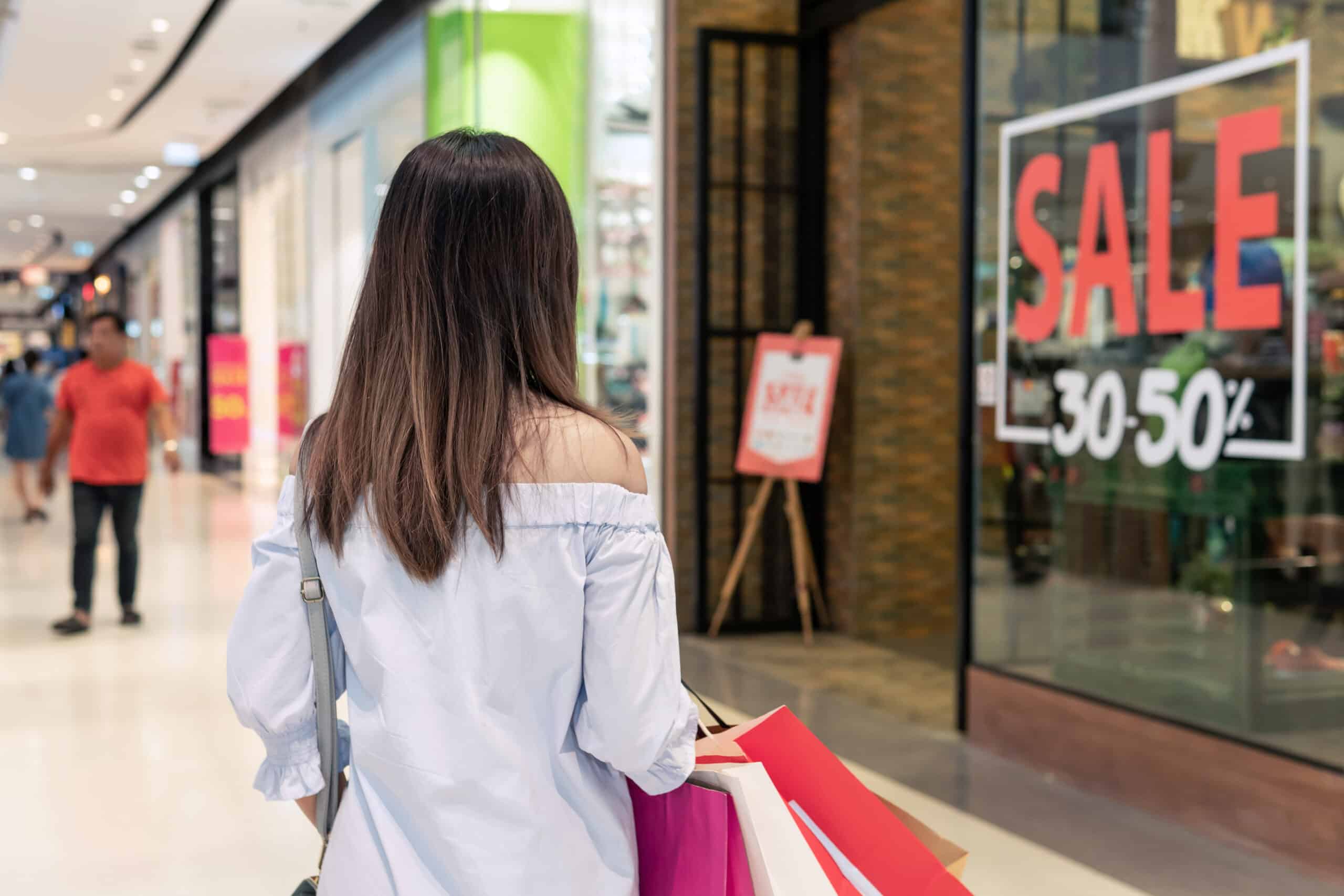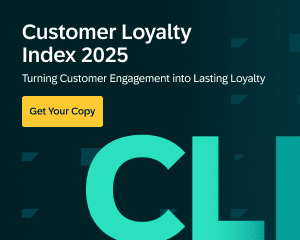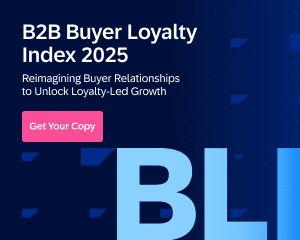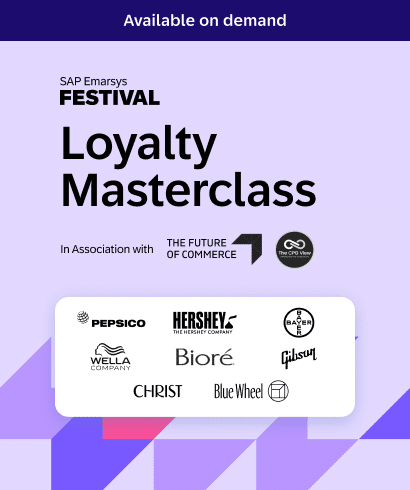The consumer packaged goods (CPG) industry is heading into 2026 with more uncertainty and opportunity than ever. Inflation and cost pressures are driving shoppers to private-label alternatives, loyalty is harder to hold on to, and digital channels are evolving at a breakneck pace.
At the same time, younger generations are reshaping how and where they engage, pushing brands to deliver more personalized, creative, and seamless experiences.
For senior marketers, the stakes are clear: it’s no longer enough to rely on traditional mass marketing or incremental campaigns. The brands that will win in 2026 are those that can anticipate consumer needs, adapt quickly across channels, and use data and AI to deliver value at every interaction.
This article explores the CPG marketing trends that will define the year ahead, from omnichannel “phygital” experiences to AI-powered personalization, social commerce, and beyond, and offers a roadmap for how CPG brands can turn disruption into growth.
1. Consumers Expect Seamless Omnichannel “Phygital” Experiences
“72% of CP marketers say it’s becoming harder to engage meaningfully with customers.” – Global Consumer Products Report
📊 What’s happening?
The line between physical and digital shopping has blurred. Consumers research products online, discover them on social media, and buy them in-store. In 2026, they will expect every touchpoint to feel connected, no matter where the journey begins.
📌 Why it matters for CPG marketers
Shoppers don’t think in channels, they think in moments. Whether scanning a QR code in a supermarket aisle, redeeming loyalty rewards in a mobile wallet, or trying on products with AR filters, they expect brands to recognize them and continue the conversation seamlessly.
🚀Your strategic takeaway:
CPG marketers must unify touchpoints into a single customer view. By orchestrating journeys across web, app, social, email, and store, brands can deliver relevance in the moment and build loyalty in an environment where switching is easier than ever.
2. Brands Use Hyper-Personalization to Deepen Consumer Loyalty
“52% of consumers say their experience with CP brands feels impersonal.” – Global Consumer Products Report
📊 What’s happening?
Consumers are flooded with marketing messages, but most still feel irrelevant. More than half of shoppers say their experiences with CPG brands are impersonal, even though personalization is one of the biggest drivers of engagement. By 2026, consumers will expect brands to know their preferences and tailor interactions at every step.
📌 Why it matters for CPG marketers
Personalization has become the deciding factor in loyalty. Shoppers want brands to anticipate their needs and deliver value in real time. That could mean sending a coupon for a product they buy regularly, recommending complementary items online, or tailoring email content to their browsing behavior.
🚀Your strategic takeaway:
Marketers must move beyond basic segmentation and embrace one-to-one engagement at scale. By unifying first-party data and applying AI-driven insights, CPG brands can predict consumer needs, personalize offers, and strengthen retention in a market where switching brands is easier than ever.
Best practice in action: Ferrara, the maker of Trolli and NERDS, used SAP Emarsys to unify customer data and deliver hyper-personalized campaigns. The result: a 59% increase in contactable customers and fan growth of more than 300% for the Trolli brand.
3. CPG Marketers Turn to AI to Power Personalization and Efficiency
“89% of CP marketers believe AI will be essential for engaging new customers, but only 9% of consumers want more personal interactions created by AI.” – Global Consumer Products Report
📊 What’s happening?
Artificial intelligence has moved from experimental to essential. Nearly nine in ten CPG marketers believe AI is critical for both acquiring and retaining customers. At the same time, consumers are selective about how they want AI used. They value deals, offers, and personalized recommendations powered by AI, but they’re less interested in simulated “conversations” with brands.
📌 Why it matters for CPG marketers
AI is the only way to deliver personalization at scale, but its role must stay behind the scenes. Consumers want AI to enhance convenience and relevance, not replace human connection. That means using AI to analyze data, generate insights, and optimize campaigns while keeping customer-facing interactions authentic.
🚀 Your strategic takeaway:
CPG brands should use AI to improve speed and scale in marketing operations, from predictive analytics and send-time optimization to automated product recommendations. The key is to balance automation with human oversight so that content stays relevant, consistent, and trustworthy.
Best practice in action: SAP Emarsys clients use AI-powered segmentation and predictive analytics to anticipate consumer behavior, optimize send times, and automate campaign orchestration. This ensures that every message is timely, personalized, and aligned with consumer expectations.
4. First-Party Data and Privacy Become the Foundation of Consumer Engagement
“71% of consumers are put off by brands asking for data without explaining how it will be used.” – Global Consumer Products Report
📊 What’s happening?
With third-party cookies disappearing and regulations tightening, brands can no longer rely on legacy tracking. Consumers are cautious about sharing personal information, and 71% say they’re put off when brands ask for data without explaining how it will be used. At the same time, shoppers are willing to exchange data when there’s a clear value, such as personalized offers or loyalty rewards.
📌 Why it matters for CPG marketers
The ability to collect and activate first-party and zero-party data will define how brands connect with consumers in 2026. Trust is now a differentiator. Brands that show transparency and deliver value in exchange for data will build stronger relationships, while those that fail to protect privacy risk losing loyalty.
🚀 Your strategic takeaway:
Marketers should prioritize building robust loyalty programs, mobile apps, and direct-to-consumer channels that encourage consumers to share data willingly. Investing in unified customer profiles and consent management ensures that data is not only collected responsibly but also used to deliver relevant, timely engagement across channels.
Best practice in action: Molton Brown partnered with SAP Emarsys to power loyalty initiatives tied to its ESG strategy, including refillable solutions. The approach combined promotions, subscriptions, and loyalty rewards, driving a 68% increase in customer value compared to non-ESG shoppers.
Best practice in action: Ferrara uncovered that a large portion of its consumers enjoyed its candy while gaming. Using SAP Emarsys and other SAP solutions, the brand activated personalized social and digital campaigns around this insight, boosting retention and positioning Trolli for long-term fan growth.
6. Gen Z Reshapes Expectations with Demand for Creativity and Authenticity
“56% of Gen Z say they don’t care about “brands” as long as products meet their needs.” – Global Consumer Products Report
📊 What’s happening?
Gen Z is now the largest consumer generation, and their influence is reshaping how brands engage. They’re quick to abandon brands that don’t keep them interested — 43% say they’ve stopped buying from a brand simply because they got bored. This generation is also more likely to be drawn in by creative campaigns, memorable experiences, and authentic messaging.
📌 Why it matters for CPG marketers
Unlike older generations, Gen Z doesn’t care about brands for their name alone. They want products that meet their needs, delivered through experiences that feel fresh, relevant, and aligned with their values. Short-form video, gamification, and interactive campaigns resonate more strongly with this group than traditional ads.
🚀 Your strategic takeaway:
Marketers must build agility into their content strategies. That means creating campaigns that tap into cultural moments, encouraging participation through challenges and UGC, and ensuring the brand voice feels genuine. Keeping Gen Z engaged requires consistent creativity, ongoing innovation, and alignment with the causes they care about.

7. Direct-to-Consumer Expansion Gives Brands More Control and Data
“60% of consumers believe buying directly from a product’s website should cost less.” – Global Consumer Products Report
📊 What’s happening?
Direct-to-consumer (D2C) channels, once the domain of digital-first disruptors, are now a core growth strategy for established CPGs. U.S. D2C e-commerce sales are projected to hit $186 billion in 2025, and consumers are embracing subscriptions, brand-owned marketplaces, and exclusive online product drops.
📌 Why it matters for CPG marketers
D2C models let brands capture richer first-party data, test new products quickly, and deliver premium experiences that aren’t always possible through retailers. At the same time, they give marketers more control over customer engagement, pricing, and messaging — helping to offset the rise of private-label competition.
🚀 Your strategic takeaway:
CPG brands should invest in D2C platforms that deliver frictionless shopping, personalized recommendations, and loyalty integration. These channels are also ideal for piloting new products, gathering feedback, and creating exclusivity with limited releases or curated subscription boxes.
<b>Best practice in action:</b> By pairing SAP Emarsys with direct channels, brands like John Frieda have been able to orchestrate omnichannel campaigns that connect retail and D2C seamlessly — achieving a 4× conversion rate during product launches and driving repeat purchases across multiple touchpoints.
8. Value-Based Marketing and Loyalty Programs Protect Against Private-Label Growth
“57% of consumers have switched to own-label alternatives because they are more affordable.” – Global Consumer Products Report
📊 What’s happening?
Economic pressure continues to shape consumer behavior. In the past year, 85% of shoppers made cutbacks, and many switched to private-label alternatives for everyday products. With store brands now seen as comparable in quality, national brands must work harder to justify their price and maintain loyalty.
📌 Why it matters for CPG marketers
When budgets are tight, consumers expect clear value in return for their spend. If they don’t see it, they’ll switch. Personalized promotions, dynamic pricing, and compelling loyalty rewards can make the difference between keeping a customer and losing them to a lower-cost competitor.
🚀 Your strategic takeaway:
Marketers should design loyalty programs and offers that respond to individual behaviors and needs. By using data-driven insights to deliver personalized savings, exclusive rewards, or subscription benefits, brands can strengthen emotional connections while addressing the demand for value.
Best practice in action: Molton Brown combined ESG-driven initiatives with loyalty and subscription offers powered by SAP Emarsys. The result was a 68% increase in customer value compared to non-ESG shoppers, proving that purpose and value can go hand in hand.
Preparing for 2026: Turning CPG Trends Into Growth
The CPG industry is entering 2026 with shifting loyalty, rising private-label competition, and consumers who expect more relevance and convenience than ever. The brands that will thrive are those that unify data, embrace AI responsibly, and deliver personalized, omnichannel experiences that build trust and loyalty.
From social commerce and direct-to-consumer growth to hyper-personalization and value-driven engagement, these trends show a clear direction: marketers must be more agile, more data-driven, and more consumer-centric than ever before.
👉Get ahead of the trend: Book a demo to see how SAP Emarsys can help you deliver personalized, AI-powered engagement at scale.







